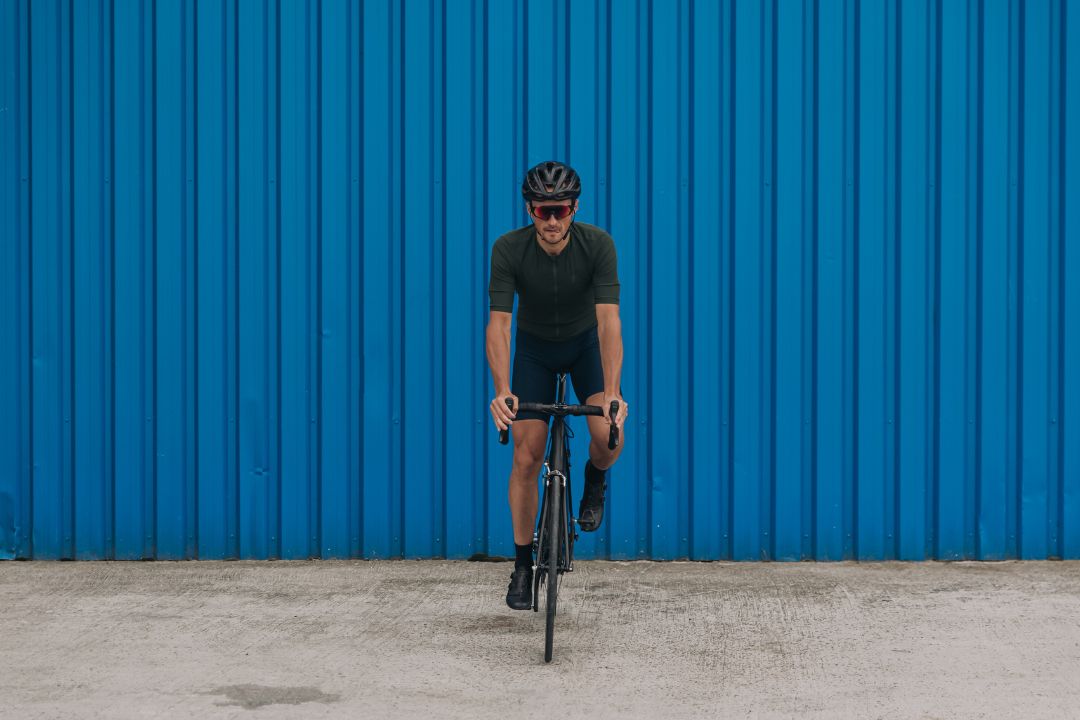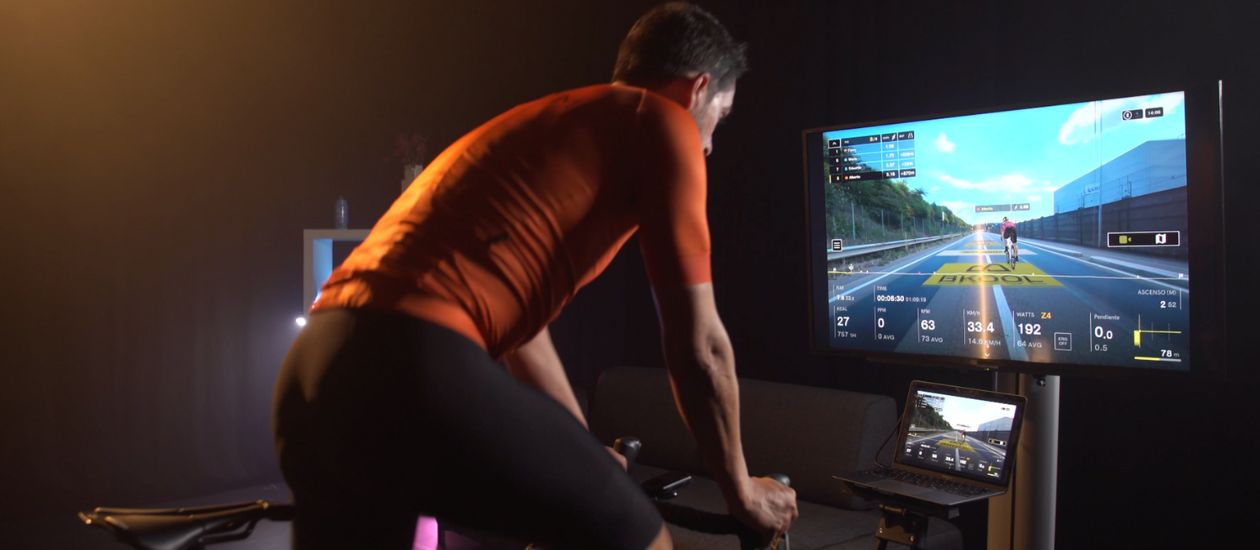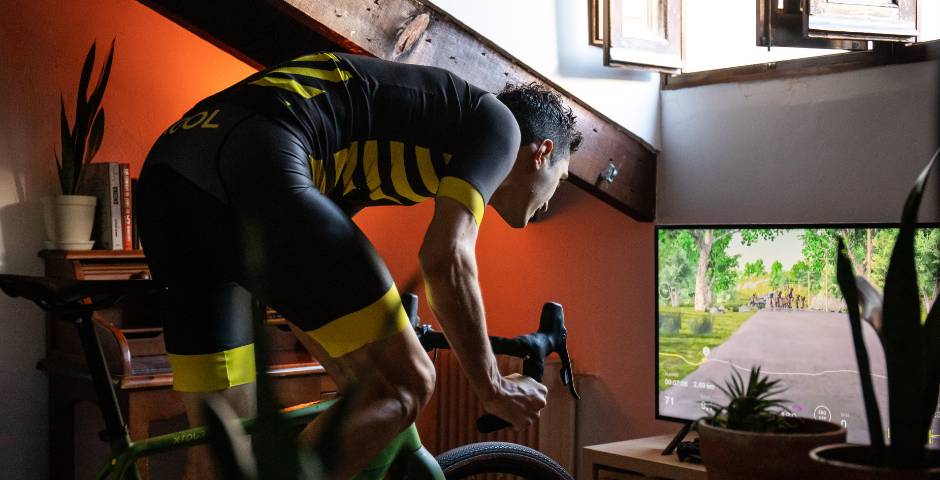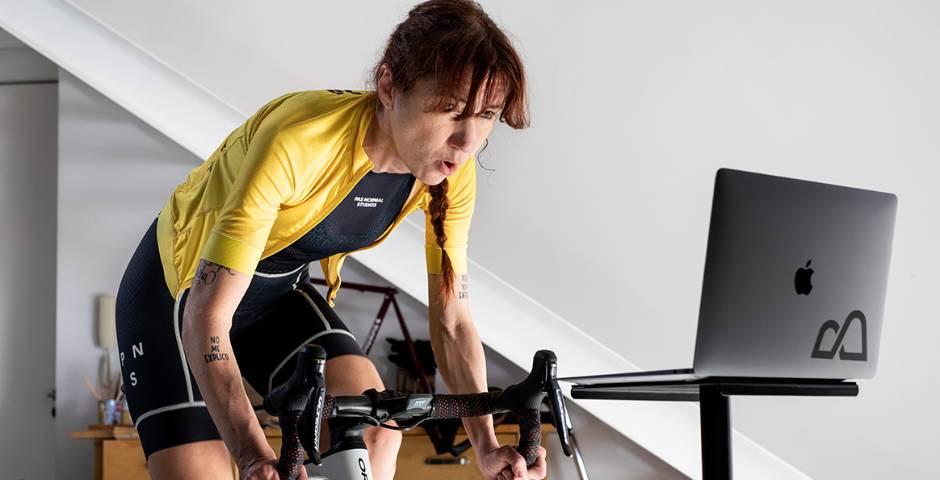Cycling, more than a sport or a form of transport, is an experience that unites the cyclist with his or her bike. To achieve maximum enjoyment and performance, it is essential to understand cycling ergonomics, which is nothing more than the science of customising the bicycle to suit the peculiarities of each body. Correct bike adjustments not only improve comfort but also increase efficiency, allowing riders to ride longer distances with less effort and reduce the risk of injury.
Adjusting saddle height
Proper saddle height is crucial for a comfortable and efficient cycling experience. A saddle that is too low can result in reduced pedalling efficiency. A low saddle position prevents full leg extension, which leads to unnecessary muscle strain and increases the risk of knee injuries.
On the other hand, a saddle that is too high causes excessive swaying of the hips and exaggerated stretching of the legs, resulting in pain and discomfort in the hips and lower back. The optimal saddle height allows for a slight bend in the knee (approximately 25 to 30 degrees) when the pedal is at its lowest point. This facilitates efficient pedalling and proper use of muscle strength.
This fit is achieved by measuring the inseam and applying specific formulas or, more ideally, through a biomechanical cycling study. The goal is to find a balance that allows the rider to maximise pedalling power while maintaining comfort and reducing the risk of long-term injury.
Handlebar positioning and stem adjustments
The handlebars are the primary point of contact between rider and bike, and their position directly influences comfort and control. Handlebars that are too low or too high, or too far or too close to the saddle, cause strain on the back, neck and shoulders. Adjusting the stem, which is the part that connects the handlebars to the bike, is critical to finding the ideal ergonomic position that combines comfort and aerodynamic efficiency.

Selection and adjustment of pedals and cleats
Pedals and cleats are essential for an efficient connection between rider and bike. Choosing the right type of pedal and cleat, and adjusting them properly, is vital to optimise the transfer of power from the rider to the bike. Improper fit leads to loss of efficiency and even injury. It is important to ensure that the cleat position allows for natural alignment of the knee and ankle during pedalling.
Adjusting the saddle position: tilt and offset
Adjusting the saddle position in terms of tilt and offset is vital for comfort and efficiency in cycling. Saddle tilt directly affects weight distribution and comfort on the bike. A saddle that is tilted too far forward causes excessive pressure on the hands and arms. While a backward tilt increases pressure on the perineal area.
The ideal position is generally horizontal, although minor adjustments may be required depending on personal preference and the rider’s anatomy. Saddle offset, on the other hand, refers to the saddle’s forward or rearward position. Correct saddle offset ensures that the knee is correctly aligned over the pedal at the point of greatest pedal power. This fine adjustment helps to optimise pedalling biomechanics, improving efficiency and reducing the risk of injury.
Tyre choice and pressure
The right choice of tyres and tyre pressure is a crucial factor for comfort and efficiency in cycling. Tyres act as the first point of shock absorption. Their selection should be based on the type of terrain and the usual riding conditions.
Wider tyres with lugs are ideal for uneven terrain. These types of tyres offer greater traction and shock absorption, while thinner, slicker tyres are preferable for asphalt roads. Tarmac reduces rolling resistance and increases efficiency.
Tyre pressure also plays an important role: too high a pressure makes the bike less manoeuvrable and increases the feel of every bump, while too low a pressure increases rolling resistance and the risk of punctures. Finding the right balance in tyre pressure, which varies according to rider weight and road conditions, is essential to ensure a comfortable and efficient ride.
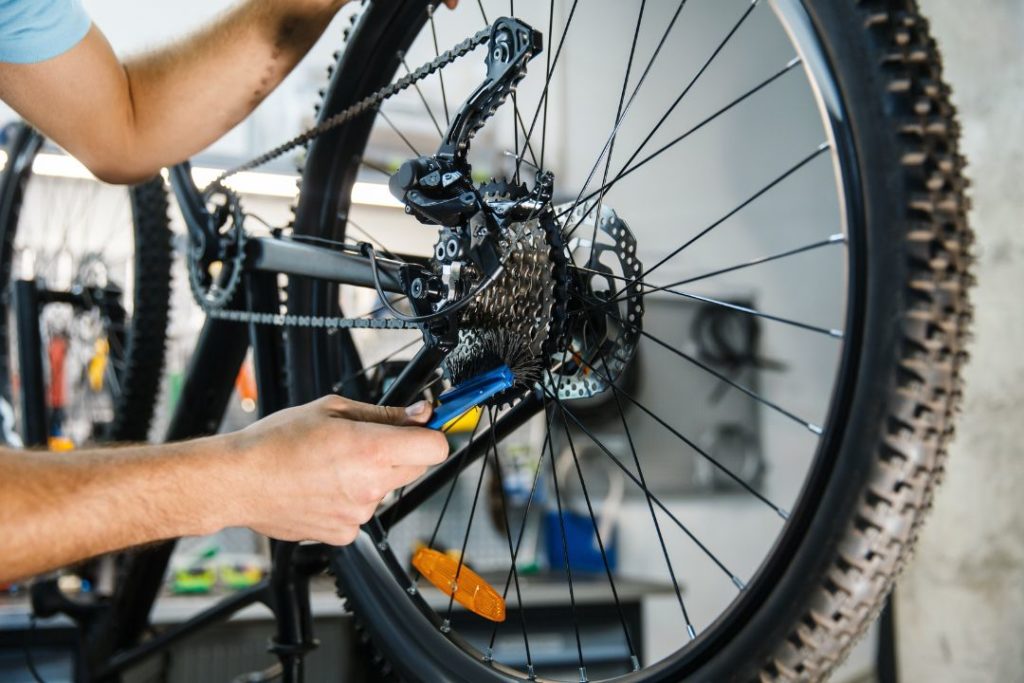
The importance of suspension and its adjustment
For mountain biking and other types of riding where the terrain is uneven, suspension plays a crucial role in comfort and efficiency. A well-tuned suspension system absorbs shocks from the terrain, allowing for greater control and pedalling efficiency. Improper suspension tuning can result in a bike that is inefficient at absorbing shocks or too soft. This reduces pedalling energy transfer.
Transmission adjustments and their impact on efficiency
Drivetrain adjustments and their impact on the efficiency of the bicycle are fundamental elements of optimal cycling. The drivetrain, which includes the chainring, cassette, chain and derailleur, must be correctly aligned and adjusted to ensure smooth shifting and efficient power transfer from rider to bike.
An improperly adjusted drivetrain can cause chain jumps or jerky shifting, which reduces pedalling efficiency and increases component wear. Regular maintenance, including cleaning and lubrication of the chain, as well as precise adjustment of the derailleur, is essential to maintain an efficient drivetrain. In addition, choosing the right size of chainrings and sprockets, according to cycling style and terrain, significantly improves pedalling efficiency and the overall cycling experience.
Science backs up the importance of fit in cycling
A study entitled “The association of bike fitting with injury, comfort, and pain during cycling: An international retrospective survey“, conducted by Jose Ignacio Priego Quesada and colleagues in 2019, highlights the importance of correct bike fitting. Conducted at the University of Valencia, among other institutions, the study used an online survey completed by 849 cyclists worldwide.
The findings indicated that both user- and professional bike fit were associated with an increased likelihood of reporting no pain while cycling and reporting a comfortable posture, demonstrating the relevance of proper bike fit in improving comfort and possibly reducing pain while cycling.
One way to train for the different adjustments you have to make on the bike is to do it with your trainer and be able to adapt to the different adjustments. BKOOL is a great way to start giving a plus performance in your cycling events.
BKOOL is the most complete cycling simulator on the market, try it FREE for 7 days!
 Go to BKOOL
Go to BKOOL
